Forgive the rather distant photo but I didn’t want the six occupants of that 1958 Ford Fairlane to turn around and see me very obviously photographing them. Yes, six occupants – not a single convertible today has two rows of three abreast seating like this Fairlane. Even the four- and five-passenger, intermediate or full-sized convertible is a rare breed. And isn’t that a shame? Do you wish this body style were more popular?
Heck, try and find a convertible that isn’t a prestige German or a pony car. The Toyota Solara, Pontiac G6 and Chrysler 200 are all gone, much to the chagrin of Floridian rental fleets. The Volkswagen Golf and Buick Cascada remain but they’re a bit on the small side.
Their sales numbers may have paled in comparison to their coupe, sedan and wagon counterparts, but larger convertibles like this Pontiac Grand Ville were truly striking and utterly American cars.
While we’re at it, who would love to see the four-door convertible return? Here was a body style that never really amounted to much in terms of popularity, and yet the most famous four-door convertible, the 1961 Lincoln Continental, is truly an iconic vehicle even if its place in history carries infamy.
Mercedes-Benz tantalized us with the stunning Ocean Drive concept, but the closest we got to that was the regrettable Maybach Landaulet. Sad. The Ocean Drive would have been a very unique niche offering.
Cadillac also had a four-door convertible concept, the brash, retro and unapologetically American Ciel.
Personally, convertibles aren’t my style. I’ve never even owned a car with a sunroof. And, interestingly, the entire world has gone crazy not for convertibles but for crossovers, which as a trend makes a lot more sense. I’ve been tempted in the past but I find that body style generally too practical for my liking. I would never use the space! But what happens if you merge the two? Nissan tried and failed with the overpriced, overweight and overwrought Murano CrossCabriolet, and now Land Rover is trying with the Range Rover Evoque convertible. Is that a niche you want to see take off?
Ok, so I didn’t think many Curbsiders would go for the Evoque convertible (I know I wouldn’t). But, I dare say we will approach more unilateral agreement with the body style pictured above: the four-door hardtop, exemplified by this 1974 Ninety-Eight.
Or is there another body style you fancy, one that was once popular (or perhaps never was at all) but you wish were popular now? Share below!











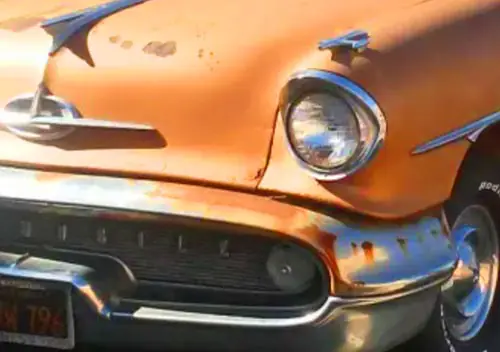
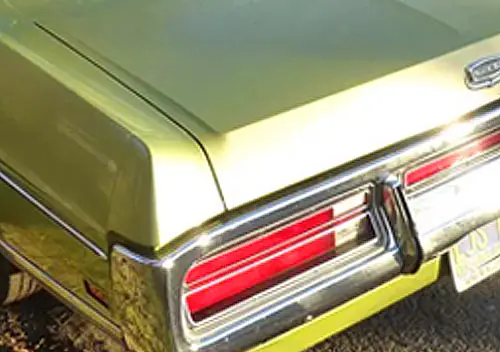



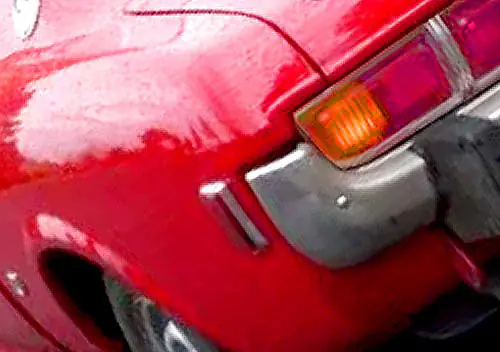


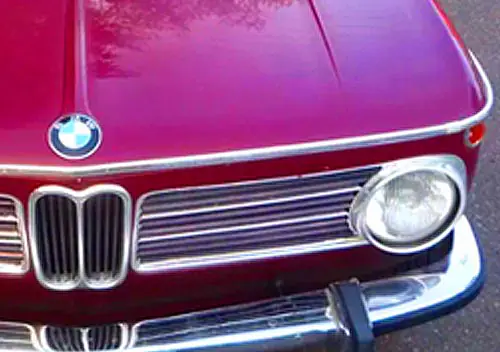
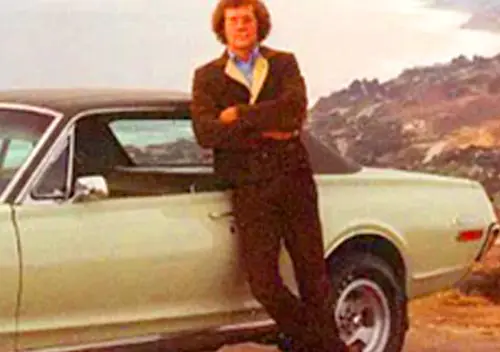

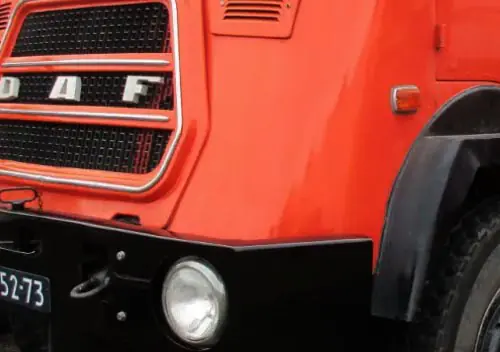
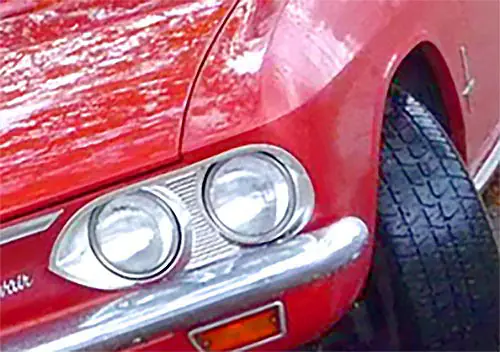

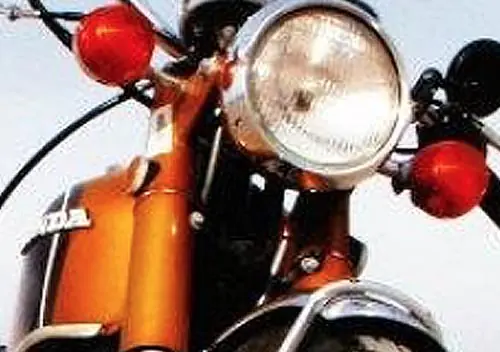
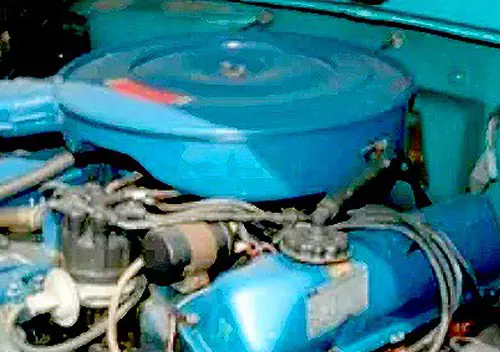
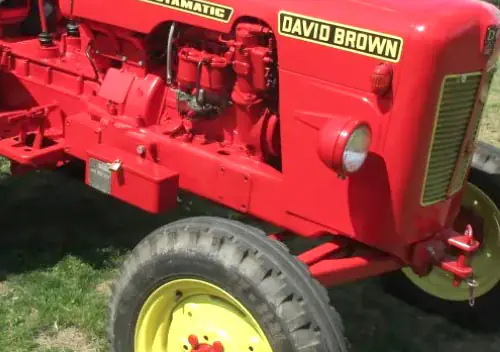


A lot of old types that were missing for 40 or 50 years are back now. Sedan delivery or Commercial Sedan, back as Ford Transit Connect. Opera coupe with fold-down jump seats, back in some pickups. Roadster pickup, gone since 1920, now back.
The only interesting type that still hasn’t returned is the true Business Coupe, with shelves and pass-throughs to the trunk
Rumble seats are still gone, and good riddance. Ditto the center-door sedan, never practical.
Chevy had a better interpretation of the panel with the HHR, the idea being seeded by the PTCruiser concept and kits. The Transit makes a functional utility vehicle like the originals but won’t likely be embraced by hotrodders. The Jeep Grand Cherokee, Dodge Nitro, Chevy SSR, Dodge Magnum, Holden Monaro/Commador, Dodge Dakota and quite a few other platforms should have spawned panel trucks. Huge missed opportunity for both gearheads and businesses wanting something cool as a rolling billboard that earns its keep.
“…quite a few other platforms should have spawned panel trucks. Huge missed opportunity for both gearheads and businesses wanting something cool as a rolling billboard that earns its keep.”
Actually, it was printed, one-way window decals that made panel trucks and vans largely obsolete. Why drive a steel box with huge blind spots, when you can drive a rolling billboard that you can actually see out of?
What really killed the panel truck was the first wave of American vans in the early ’60s–vehicles that had the same interior space as the old pickup-based panel trucks, but were much shorter thanks to the forward-control layout. Panel vans, that is to say, windowless vans, are still around. But yes, one-way window decals helped immensely.
Two door estate cars, especially ones with fastbacks.
My favourite is the HB Viva, but I wouldn’t say no a a Lynx Eventer.
+1. I really liked that Chevrolet Caravan (?) featured recently.
That’s just what I was going to mention. The ’60 Ford Ranch Wagon may be my favorite but the ’65 Chevelle is a good candidate too.
I like the 4-door hardtop returning as well as the 2-door hardtop coupe. Speaking of 2-doors, how about the return of the 2-door sedan?
Agree that the automotive world is worse for the lack of a proper full-size, four-door convertible.
I also miss the compact, RWD economy car. Understand the practical reasons for going to FWD but I still think some automaker could successfully exploit a gap in the market by developing something along the lines of a modernized Datsun 510/BMW E21.
Yes, about the only four door convertible these days is the Jeep JK. I know, it’s not exactly the same, with the pillar and framed doors.
Count me as a fan of the big convertible. As you note, even a 4 place convertible is a rarity. I still wonder if the soon-to-be killed Chrysler 200 would have racked up some decent sales numbers had a convertible been part of the line. The Challenger would be a natural big convertible, as the 2 door body is already there. But it is probably too late in the game to see that one come along.
My favorite four-door convertible (but of course!):
I always think personal luxury is a market niche going against the engineering side. The specialty nature of the product requires the car to be rare for desirability but when some cars are that rare, it’s not cost effective to make it. If the car business isn’t feasible to make five colors for the interior, it is not to make a personal luxury car neither.
When personal luxury cars were the fad, they sold in numbers that exceeded just about everything but the top selling full sized trucks today. I’m talking about 352,000+ Thunderbirds in 1978 and in 1980 and ’81 Oldsmobile sold 460,000 and 454,000 Cutlass Supremes.
Do those Cutlass Supreme sales #’s include sedans? The 1980+ ‘Seville like’ versions sold like hot cakes, after the Aerobacks flopped
I miss the proper 6 seater sedan, 2 benches and a I6 or V-8 RWD.
+1. There are enough SUV’s and (some) cars wide enough for a 3-seater first row. Instead of that, we get wide (and useless) center consoles. Even pickups are following that trend.
Gonzo: my most despised part of modern cars. I’d like a console delete option.
Consoles are ridiculous. The “storage” bins under the arm rest or trays in front of them usually just accumulate useless crap and its it the way of your leg.
Bring back the column shifter and split bench. Even if you are the type who likes to collect useless garbage in your car, the sort of bench set up in the Deville/Lucerne/Impala provides more than enough storage.
Please, someone, rid us of these worthless fads!
So agree. I had a revelation at some point that any of my hoarding tendancies are exacerbated by excessive storage devices. I went on a tear a few years ridding myself of bins and shelves and managed to pare down what I need into purposeful enclaves, and I’ve maintained it. I wish modern cars were like this, but no, there’s storage everywhere and I constantly need to clean them out after accumulating stupid things like receipts, drinking straws, or whatever. My ideal interior is manual floor shift, bucket seats and no center console.
And yet, when the bench was still around, not enough people bought it to make it worthwhile.
That’s because the center console was the new cool thing after years and years of the dominance of the column shift. I could maybe see the center console going away after people get bored of them but I’m not holding my breath either.
Bench front seats have gone for a reason. You can’t stuff multiple kids in front anymore, the bench is impractical if you spend a lot of time in the car with someone who’s a radically different height, and some of us like having actual side bolsters rather than having to rely on the three-point harness to keep us in place.
If you have a manual transmission and a proper fly-off handbrake, as I do, a column shifter is not desirable, although I will grant that for automatics or auto manuals, it doesn’t really matter. And I happen to find the console quite useful — mine has a place for my elbow, somewhere to store CDs, and two cupholders I don’t have to stretch to reach.
However, I will grant that there’s no particular reason the console needs to be integrated with the center stack. I would not be unhappy if mine ended at the shift lever. In that case, it would still perform all its current functions without impinging on knee room, which I’m getting is the heart of a lot of your objections.
Thank you!
I just don’t see the appeal. Benches feel like they would have a disconnecting sensation to me. I like getting into a nicely bolstered driver’s seat and grabbing the shifter and the wheel and feeling in control. Not sliding around on a bench. And, having never owned one – they fell out of popularity decades ago here – I’ve just been a little confused as to how they would be comfortable for, say, a very tall driver and short front passenger.
Yes, some consoles are too big and yes, a lot of shifters are becoming column-mounted again (or push-button as with new Lincolns), but I like having the console space for cupholders or storage. Sure, it would be nice to enter the car from either side but I think to myself, “How often would I even do that?”
I know you can have cupholders with a bench/column-shifter set-up, but I like having cupholders closer to me.
I love variety and I can honestly see bench-like seats becoming more popular once again – after all, the Tesla Model S and BMW i3 don’t have a console – but there’s a reason why bench seats disappeared: they just weren’t popular enough.
American cars (not so much trucks) often offered various split bench seats, typically divided 40/60 or 45/55, so you wouldn’t have to curl into the fetal position every time your 150-cm-tall spouse was driving. Of course, you had to pay extra for this arrangement, which was typically power-assisted, and it still didn’t provide any lateral support.
Whether it’s desirable or not sort of depends on whether you find the idea of driving from a lounge chair appealing or distressing, I suppose.
The Gen2 Prius had a very intelligent design in this area … a large console with cup holders and a pull out drawer large enough for a low full-size Kleenex box, but no center stack (or floor shifter). One could slide over from driver to passenger side quite easily, though not quite as effortlessly as in a ’60’s bench seat Impala.
To this day Im baffled that clamshell door setups like on many extracab pickups, Mazda RX-8, Honda Element, Toyota FJ haven’t taken off. The RX-8 seems to me the obvious argument for why this bodystyle should have eradicated the ‘sport sedan’ segment entirely. You got the looks of a sports car, with better backseat access…best of all worlds. For traditional luxury cars or low end family haulers, four real doors are just fine. Of all the cars that should use this style , the Dodge Charger ranks at the top. If the same basic layout of the Pontiac Rageous concept car were used (V8, available manual rear or awd, clamshell doors, liftback) then that would be a true segment buster. When the Rageous was shown, the term ‘crossover’ included a myriad of fresh and interesting ideas, not just boring beefed up minivans/wussified SUVs.
I think the opposite, worst of both worlds. You still have 4 door cutlines, out of proportion pillar locations, usually fixed glass, and Marlin like rooflines. It just screams forced compromise, with the only real gain a shaved rear door handle(which looks dumb), at least 4 doors are honest and the windows go down
+1
The windows can still go down in clamshell doors, provided they’re built correctly. Ford did it on the 2004-present SuperCab, and GM on the 2007-13 extended cab.
From what I’ve seen, coupes with clamshell doors usually have awkward rooflines that spoil the effect. Modern 4 door sedans generally have very sporty and sleek styling compared to old sedans, so you don’t give up much style for the convenience of a true 4 door instead of a clamshell coupe.
The clamshell doors are disappearing on pickups. I’m not sure about all the domestics, but they’re gone on Tundra and Ram. I’ve not owned one, but while it seems practical to have that large opening, there are complaints of poor sealing and resulting wind noise, as well as difficulty accessing the back seats when parked nose-in next to other cars. The front doors have to be opened first, then the back doors, blocking access especially with a shopping cart or baby stroller.
Dodge was the first to drop clamshells on the full-size pickups when they lengthened the Quad Cab for 2002, and Toyota did the same on Double Cab Tundras in 2007. GM traded its front-opening extended cab for a rear opening Double Cab in 2014. No idea if Nissan will keep clamshells on the 2017 Titan King Cab, but if they don’t, Ford’s SuperCab will be the only one left, and they’ve said they plan to keep it that way for a while. Apparently, safety was a concern (It’s easier to get good rollover ratings if you have a B-pillar instead of having to strengthen the A and C-pillars), but Ford has made it work.
Personally, I’ve always liked the clamshell extended cabs, because the lack of a B-pillar and the ability of newer models to open 170° on a double hinge. But yes, they can be a little awkward to open if you’re in a cramped parking space.
Long wheel base 7-9 passenger sedans like the big Mopars in the 40s and early 50s. Not quite a full-blown limousine but just a big roomy car. For that matter, a Fleetwood Series 75 set up as a sedan with jumpseats and no divider would be a nicer version of the same thing.
+1
(Relatively) low wagons. Particularly if you give up any possibility of a driven rear axle, you can get an impressive amount of floor-to-ceiling load height without going over a 55″ overall height.
Runner-up – Midsize and larger fastback 5-door hatchbacks. Sedan sales are cratering and this could be a fix, many of them have huge trunks, mainly under the rear window/package shelf with tiny cat-flap trunklids.
I miss station wagons a bit, the real honest-to-goodness station wagons with a substantial cargo area behind the second seat.
I don’t miss two-door sedans; I saw far too many of them that were bottom-of-the-line, noisy, uncomfortable, sluggish, poverty-spec.
Convertibles: I have mixed feelings. They’re fun to rent in a place like California, and they’re great on quiet roads that don’t get traveled a lot. In southern Arizona, though, they’re only good on warmish days from about October through March; from April through September, the sun gets pretty darned fierce. On the highway, I don’t want the top down; it’s much too hard on my aging ears. So I don’t feel a great need to own one.
I really miss the gracefulness of hardtops at their best, both two-door and four-door, even as I recognize the disadvantages–it’s harder to keep strength in the roof, and the lack of door frames around the windows makes it harder to keep them sealed. But they could look good!
Personal Luxury Coupes like the T-Bird or Grand Prix were always my favorite style of car. Sadly they went away. They were even better when you could roll the back window down for that clean look… with no B pillar (2 door hardtop). This is a segment I would like to see come back. Sure, you can go buy a Bentley, but I’m talking about affordable cars here.
My handle here would be T-Bird Rick if they still existed. Sadly, if you want a rear wheel drive 2 door coupe and you like Fords, you have to go with the Mustang.
Not that I’m complaining….
First: four door hardtops; Second: four door convertibles; Third: two door hardtops; Fourth: two door sport wagons; Fifth: seven passenger sedans/limousines (not bus-line stretched sedans).
On the note of two-doors, I read on another blog that VW is discontinuing the 3-door GTI in the US. I expressed that I’ve been surprised for at least two new generations of Golf that the body style hadn’t been cancelled entirely.
In other markets, Ford sells the Fiesta as a 2 door (well, 3 including the rear hatch). When the car in question is of a “certain size” (Chevy Spark comes to mind) as to make 2 doors on each side of the car borderline tiny, I don’t understand why car manufacturers can’t adopt the Saturn Ion/Hyundai Veloster 3 door idea.
Honda still sells the Civic as a 2 door coupe, though I imagine (can’t say for sure) 90%+ sales of the Civic coupe are in North America.
I, too, wish there were more small 2 door cars.
2 door hardtops, 2 doors that aren’t sport/ponycars, and most importantly long, low and wide shapes!
It’s funny seeing that Range Rover in the drink, because my exact description for a CUV convertible is an above ground pool on wheels
The proper, traditional station wagon. I’ve owned more wagons in my driving time than any other body style, and I love them. My 2007 Focus wagon, I despair, might be my last because who is making them these days besides VW (and I wont touch VW with a ten foot pole).
Couldn’t agree more. A honest wagon with a low body, a back seat that really sits 3 people instead of 2, and real cargo space behind it (ie. you can actually haul a big, square thing and close the rear hatch without effort). How difficult can that be.
Who is making them these days ? Pretty much every automaker. In the C-, D- and E-segment. And even in the sub-compact B-segment.
That these are not being offered in the US is another subject.
Hardtops two and four door, convertibles, and, yes real honest to God station wagons with Di Noc wood trim.
Yep, only sort of wagon I’d drive is something like a Buick Electra Estate with di-noc sides, velour front seats and faux-leather rear. A proper huge stately sedan based proper station wagon.
I`m an avid scale car model builder. Recently, I built a 1-25th scale Dodge Magnum .Rather than building it in a silver or gray monochromatic color, I painted it in a yellowish ivory color and applied stick on wood paneling to the sides and tailgate to create a modern looking yet traditional station wagon. .I have to admit it looks good, and I wish Dodge produced one in reality. I`d post a picture of it here, but I can`t figure out how to upload photos because I`m not very tech savvy..
Two door sport wagons. I’d love to see the equivalent of my ’79 Monza Kammback, V-6 with the 5-speed manual.
And reliability. Honest to God, day to day, reliability. Which was a concept that totally escaped that car. And yet I still remember it fondly, at least for its concept and looks.
I wish they made and sold more CARS. Today everybody seems to buy an SUV (truck). I’ve driven an MGB roadster, a Buick Estate Wagon (station wagon), a Dodge Dart (4 door), an ’85 Honda Prelude, a ’91 Honda Prelude, a ’99 Subaru 2.5GT Wagon and a 2001 Ford Taurus station wagon. I like cars that are close to the street and station wagons. I don’t know what I’ll get next time, but I’m searching.
Whatever you do, don’t do a Google search for the MG GS….you’ll be quite disappointed at where the Chinese have taken that marque.
I’m with Bill. Cars, please, not SUVs.
CUVs are more car-related than truck-related. So a CUV is a tall car like in the ’40s.
A convertible with a usable back seat would be very welcome.
A big, brash, four door hardtop like that Olds Ninety-Eight looks very appealing. I had a bit of seat time as a 12 year old in a 1974 Ninety-Eight Regency, and wow! What a car!
I have not seen that Cadillac Ciel concept before. That is VERY appealing. But, I’m afraid that windshield, header, and any roof would be too low, and make the car an uncomfortable bunker. The manufacturers don’t seem to get it, but low roofs and gun slit greenhouses are killing car sales and pushing everyone into CUVs. My understanding is that Chevy’s latest Camaro, with its ridiculous roof and greenhouse, is selling poorly.
There is no shame in building cars a bit taller.
I don’t care. What I want is easy access to the evaporator coil so I can clean out the stinky slime.
Well, I do care. I would like conventional wagons like the Mazda 6 wagon with economic 4cylinder engines and an easily accessible evaporator coil so I can clean out the stinky slime.
Mazda still sells the 6 wagon in other markets with 4 cylinder gas and 4 cylinder diesel engines, AND manual transmissions. Ford doesn’t sell it here, but at least in the U.K. you can get the Fusion/Mondeo as a station wagon, again, with 4 cylinder gas and diesel engines and manual transmissions. Oddly, Ford doesn’t think Americans would be interested in a Fusion wagon.
Station wagons, called Estates in Europe, have always been and continue to be very popular over there. I would welcome the return of more stations wagons to NA and fewer sport utility vehicles.
They don’t sell them over here because no one besides internet enthusiasts even express an interest in such a thing. Now, subtract all the hipsters that couldn’t afford such a thing anyway even though they think it would be the bee’s knees, you have an extremely small potential customer base.
It’s the brown diesel turbo manual wagon-lol…
The 4 door convertible might not be too bad, though not so great north of 49 (winters, snow, ice, etc.). More wagons would be nice. More V8, RWD sedans would be great as well; there are still a few around, but more please.
Cars with 2 doors, NOT 4 doors (yes, hypocritically, both of my Buicks have 4 doors).
And by cars with 2 doors, I mean COUPES. Not 4-door sedans with the 2 rear doors taken out and different quarter panels instead. I want cars that were DESIGNED to be coupes.
Most 4-door sedans offered today are closer to 4-door coupes.
But what does it mean, “designed to be coupes”? I can’t think of any vehicle that was made into a coupe that didn’t have longer unique doors than the 4-door sedan.
Maybe referring to old Personal Lux coupes that had no 4 door versions, like Monte Carlo, Grand Prix, Cougar XR-7, and Cordoba. Yes, T-Birds had sedans in late 60’s.
Two door Chevelles were really 2 door sedans.
Yes, that’s it exactly.
Like many others are saying…how about the station wagon in general?
Wagons can actually be very attractive, like the Mercedes S123 or S124. Very clean, conservative, elegant styling with those two models.
Granted there are several still offered such as the Wrangler and Evoque, but I really miss 2-door SUVS for whatever reason. As you mentioned in the article, big convertibles and especially 4-door convertibles are somewhat desirable too. Front bench seats, however, are something I’ve never liked and do not miss in any vehicle.
Two rows of 3-passenger bench seats, with completely flat floor … I guess that’s still available in CrewCab pickups.
Stan Rekowski,down the street,always had a big convertible when I was a kid. I
never saw the top down ever I Always wondered why he had convertibles.
I think if I could buy a sporty station wagon I would.
Big sedans and personal luxury coupes.
Checkers.
came here to see the ciel.
was not disappointed.
Oh, and TRUE economy cars without a bunch of power junk on them.
They do still make those, in two sizes… You either get this (the “large” one):
Or this — the compact. Even the engine has no power on this one…
A small-ish (i.e. short) high quality 4 door tall wagon with an [about] 160 hp smooth 4 cylinder engine, six speed manual or automatic, with an overdive top gear for low rpm highway cruising, modest towing capability, large windows, six seats, with fold down and removable rear seats, power up/down driver’s seat, great build quality, optional all wheel drive, tough and easy to clean interior, a good warranty from an established car maker, and a price at or near $20,000. OK, maybe $24,000. Well, $26,000 max!
A modern version of this would be a no-brainer for me.
Heh! Those are some of my requirements too. At least as my dotage appears to be on the horizon…
The closest I’ve seen in modern machinery is a Fiat 500L.160 HP twin intercooled turbo 4, six speed auto or manual, plenty of room, fold down seats and a clever shelf system in the back hatch. Only drawback is no AWD system, but even for me in snowy Western Michigan, that would not be a deal breaker.
Whether or not you consider FCA an established car maker is another issue altogether…
Interesting pick.
The Pope likes it, or at least he looked like he liked it when he was here on the East coast.
The only problem is that I’m a kid of the 1950s, and Fiats were cool but terribly unreliable vehicles. Some things stick in the mind like cement, and me buying a Fiat in “my” dotage is probably unimaginable. It is also currently not getting good reviews.
I do like the split A pillar.
Understood. I have a little history with Fiats and Yugos, so my trepidation level isn’t nearly as high. Like so many other cars, bought well, I think it would be a good car. But I read the reviews too. We’ll see what happens when I actually get around to buying another car…
The Trekking Version was a COAL no t too long ago: https://www.curbsideclassic.com/cars-of-a-lifetime/coal-2015-fiat-500l-urbana-trekking-i-bought-one-thats-got-to-be-a-bad-omen-for-fiat/
I remember that. I was hoping for some updates on the car, but I see none have been posted.
Still, this is one of the few cars my wife and I can agree on. OTOH, I am waiting to see what the Chevrolet Cruze hatchback will be like. The Cruze is nearly a mid-sized car and with a hatch, I could be a Chevy driver again.
Jeep Renegade ticks some of those boxes.
4-door sedan with transverse inline-6 mounted just ahead of the rear axle.
I would go with the crowd and say a proper wagon preferrerably with a 6 speed manual and either a turbo 4 or 6 cylinder.
I tried the last time I was on the hunt for a new to me curbside classic but everyone wanted way too much money for their clapped out Subaru or Volkswagen. I ended up settling on a 98 Nissan Altima with a 4 cylinder and a 5 speed manual. Most days I can fit everything in the trunk with the seats folded flat, most days…
You had to ask? The mid sized five door hatchback. Dodge Lancer, Chevy Malibu Maxx, Opel Signum, Mazda 6, etc., etc.
So much utility, but with the footprint of a regular car.
Ford offers a liftback Mondeo (Fusion) in Europe. With the ever-more horizontal rear windows and disappearing trunklids on sedans, this is one bodystyle I’m actually a little surprised we don’t have over here. It’s almost indistinguishable from the sedan!
A number of midsized cars are/were offered as hatches in Euro-land and not here. I agree, that given the swoopy styling formerly pedestrian cars have now, why not make them hatches? When the 2008-2012 generation of Chevy Malibu was released, I was hoping for a Maxx revival, but it never happened. This current generation Malibu could do a hatchback due to styling alone.
I know the big complaints are crashworthiness and NVH factors, but the utility far outweighs those concerns. With the impending release of the Chevy Cruze hatch, I’m kind of excited to see how the car turns out.
4 door hardtop for sure. Also, gigantic full sized coupes.
Cars that you don’t have to climb down into. And up out of or any twisting motions required. Due to physical problems I only get into a car only 6 or 7 times a year, for medical appointments. So far this year only been in one 4 times with a 5th next week that I am not looking forward to. Extra pain pill time. I wish I had never gotten rid of my ’72 Dodge PU 6 years ago. So easy with flat sills, bench seat and height off the ground. Problem was after I stopped driving my wife and daughter refused to drive it, they also refuse to drive a minivan although they aren’t much better getting in or out of. I am still mobile and able to walk but getting up or down and twisting and bending at the same time are murder. A 1950 Plymouth or Dodge would be perfect, although again nobody would drive me in it. Since moving to Vancouver WA this Jan my world has shrunk to the 2 or 3 block area that I walk. I realize their is no real answer but I hate the way cars have become less ergonomically accessible. And there is no way that I could afford a new or even 10 year old used car. Our newest car is 20 years old and the oldest is approaching 30.
“Cars that you don’t have to climb down into”? How about a CUV, tall hatchback, or minivan? 😉
Like I said in the post nobody will drive any of the vehicles you describe and a I don’t drive anymore. Getting old sucks especially since I have had physical problems since the day I was born.
I didn’t see where you mentioned CUVs. I completely shot past the minivan, though; that was my fault.
Sorry to hear of your infirmities. You need a gen1 Scion xB. The easiest car to get in and out of, period. And very roomy too. And great visibility. And economy. Just a bit harsh riding.
Mrs. Tom is a hemiplegic following a stroke. Her former daily driver is a Trailblazer. The passenger seat is just the right height for me to help her up out of the wheelchair and slide into the seat. The chair stows nicely in the wayback.
I’m 65 and I appreciate a vehicle with easy ingress/egress too.
Would be fun to see someone do a modern take on the coupé de ville (a.k.a town car or sedanca). Any plutocrat worth his salt back in the olden days had one of those.
And they’re versatile – fancy a bit of air? Go to the front. Too much rain? Sit in the back.
There should be a Bentley or Benz or even a Toyota Century version in this body style.
For that matter, why not a four-door sedan/five-door hatchback with T-tops?
A T-top sedan? Were those popular?
No, unless you want to get into a hairsplitting match about the distinction between a coupe and a two-door sedan…
nlpnt specifically asked about 4- and 5-door sedans, Aaron. Has that even been attempted – in a show car, for instance?
Might still be a few NOS examples hiding in the back of a Roller dealer.
Meh. It’s missing two doors.
What was the last town car / sedanca ever made, though? I nominate this ’65 Lincoln, but perhaps there’s a more recent contender…
Ok, you win. But honourable mention for the Gulbenkian Austin FX4.
D’oh. 1969-1976.
Aren’t town cars (small T, small C) of this kind usually made by coachbuilders rather than OEMs? Lincoln certainly didn’t sell a sedanca model and I can’t think of any automaker who’s offered such a style as a factory option since before WW2.
I know there are some postwar Rolls-Royce examples, but I assume they too were done by an external coachbuilding firm. (I don’t doubt Rolls-Royce dealers would be willing to set up such a conversion for you, of course, albeit at an appropriate markup — “Certainly, if Your Highness could simply affix the royal seal to the invoice here…”)
Bearing in mind Park Ward and then Mulliner were owned by Rolls-Royce after the war, they could conceivably be considered ‘factory’. Even James Young, Hooper and others had to get factory approval for their shapes which were then offered via R-R dealers in factory literature. I’m not sure that a sedanca/tc was part of those offerings though.
Nubar Gulbenkian seems to be one exception to the ‘factory approved’ body rule. His requests include a R-R with fully faired front wheels and another (Daimler IIRC) with a clear plexiglass roof – much to the exasperation of R-R, but through sheer force of will (and a propensity to use the law courts) he seemed to get his way. Worthy of his own CC story at some point.
A fair point. I become so accustomed to ‘captive’ coachworks becoming little more than a trim name (e.g., Chrysler and LeBaron or postwar Cadillac Fleetwood models) that I forget these things.
Speaking of captive coachbuilders, now I’m envisioning a SM Opéra-style stretched four-door Jaguar XJ-S Vanden Plas with a sedanca roof, intended for the transport of a potentate of Napoleonic stature. (If such a thing actually exists and is not simply a product of my overstressed imagination, I am sorry for us all.)
A 4 door sedanca XJS. I just vomited in my mouth.
That’s just because you can envision exactly what I’m suggesting!
Any type of CAR with the ability to tow 3,500 to 5,000 pounds.
Many cars have the ability to tow that much, it’s just an issue of doing it at interstate speeds (>70 MPH), being able to stop safely, and feeling comfortable while doing so.
But their manufacturers don’t rate them to do so.
One of my favorite articles that Paul did over at the other site was one titled, “The Great American Anti-Towing Conspiracy.”
In Europe, most big cars still are officially rated to tow about 4000 lbs.
And there are also lower speed limits for towing vehicles. In the U.S., for better or for worse, most customers expect to be able to tow any weight at the same speeds as everyone else on the interstate, hence the proliferation of 400+ hp turbodiesels approaching 1,000 ft.-lbs. of torque.
Europeans don’t want to own big trucks, especially when they aren’t actually being used for towing, so they don’t. Americans generally like big trucks and don’t mind driving them empty, or filling them with gas at US prices. Commuting to work or running to the drug store in Europe in an F250 crew cab would be utterly maddening.
This sounds like a great idea for a terrible reality show: Get two random European urbanites, give each of them a new F250 dualie — petrol, not diesel — and a €500 fuel card. Make them commute and run daily errands with the truck (filmed). The last one with money left on the fuel card and no scrapes on the fenders/citations for property damage wins €1,000 and a sensible ŠKODA Citigo.
Aaron, that sounds rather twisted…I knew there was a reason I liked you. ?
F-250 dually? And with a 6.2 gas? What madness is this?
(Naw, I know what you mean.)
Could be one of those “Wife Swap” reality shows. Also give a farmer in Iowa a Smart Car or Fiat 500.
I always liked 4 door hardtops and had many Chryslers, Fords, Mercurys and 1 Cadillac over the years they were available. For 11 years I had a convertible as a second car but tired of it as the years went on and seldom used it. Strictly a sedan guy now in my old age. I never liked SUV vehicles and have no use for a truck.
Put me down as another hoping for a large,, reasonably priced, domestic convertible. There were a couple of concepts from the early 2000s that would have been perfect: the Mercury Marauder convertible and Chevy Bel Air. Unfortunately, lackluster sales of regular Marauders and new Thunderbirds meant they never had a chance of making production.
+ 1 for real Station Wagons with wood-grain sides.
I miss car based compact trucks. Say Falcon Ranchero or last gen El Camino sized. I’ll take mine with just the basics: small V8 or even a V6, manual trans, roll-up windows, and a bench seat. Skip the power accessories and the plethora of options that require a computer and add extra weight.
I miss mid-size lift backs, sporty looks with the added practicality of a large opening rear hatch.
Just another casualty of the CUV/SUV craze.
ITT: People whose hypothetical purchases would probably add up to a dozen real-life sales of brand-new vehicles. There’s a reason these bodystyles went away, as cool as they were (and they were cool)–they just didn’t make financial sense for the sellers to keep around.
Some. I think it’s a bit specious to say since outright abandonment of certain bodystyles are decades or even generationations of buyer old now. To say “nobody buys this” doesn’t mean much when there’s absolutely zero choice available to measure success against. Times change and it’s often cyclical, you look at all forms of fashion and architecture and you see it repeated. Cars are equal, yet can’t be embraced in the same way because you can’t get one from a new car dealer like you can get brand new mid century modern or whatever furniture or clothing from a store.
The same reasoning is often applied to the critique of hardtops – leaky, noisy, and structurally deficient are often assumed – But the last true hardtop cars were made a decade before I was even born, technology surely would solve most of those issues just as it has with virtually every other aspect of the modern automobile since then.
Good points. I have no doubt that the leaks, noise, and structural problems could be solved. It would be a truly awe-inspiring feat of modern engineering to make a 2-door hardtop work with side-curtain airbags.
I meant more that “nobody bought these in sufficient quantities when they were still around,” as well as the fact that Internet hype does not necessarily translate into real-world sales.
Guys, 2-door hardtops still exist. The Mercedes E-class coupe would like a word with you:
The current S-Class coupe is also a hardtop, as was the BMW 8-Series.
And both Nissan and Toyota kept building four-door hardtops into the early ’90s, although I doubt you’d see one outside Japan or Australia.
Put a Ford/Chevy/Toyota/Honda badge on that at Ford/Chevy/Toyota/Honda prices, then we’ll talk. I’ve long been aware of those Mercedes Benz hardtops but they’re Mercedes Benz.
I’m not saying they were cheap or attainable, but they did exist within your lifetime (unless you’re a lot younger than I would have assumed) and it isn’t impossible. The new roof crush standards probably make it tougher, though.
I’m not arguing that it’s impossible, on the contrary, but in my lifetime it’s never existed on mainstream cars in the capacity they existed in the 50s/60s/(early)70s. Citing Mercedes or BMW when asking the whatever happened to hardtops like the Chevy Bel Air is like citing Ferrari or Lamborghini when asking what happened to mid engined 2 seaters like the MR2.
Granted, I did forget take into account the Japanese hardtops, but they are pretty obscure, and what few cars that made it to the states (vigor, 1st gen ES) are still quite distant in the past.
Matt: the Vigor and ES were not true hardtops; they were “pillared hardtops” at best (frameless side window glass) and as such no different than scores of Japanese cars right down to most Subarus until very recently. Our Forester still had them. I don’t think any Japanese genuine four door hardtops were ever sold in the US.
Wow, where to start? Many have been mentioned here already, but two styles that always come to mind…
One is the compact pickups that were so common in the 1980’s and 1990’s (and I think the golden years for these, with so much variety and better refined than the 1970’s, and before they got too big and grew too many doors).
Second is a proper ute, as they call them down under. I wish so much I had bought a 1985 El Camino years ago when I had the chance, and I guarantee it would have been earned its keep (no scratch-free beds for me).
Regular cab pickups in anything smaller than a full-size don’t have enough space for the majority of buyers. This isn’t saying that the buyers have gotten more ….latitudinally challenged (though they have), but rather that the target market for smaller-than-full-size pickups has changed. It’s now for the person who might only use a pickup as a pickup on the weekends, and needs something usable as a family vehicle during the week that’s not as bulky as a full-size. And there’s really nothing wrong with a scratch-free bed; it may just mean that the owner uses the vehicle primarily for towing rather than hauling.
Good point about the bed sir, that’s reasonable. I guess I was thinking of the guys I knew when I was younger that used their trucks as cars and were afraid of any signs of what they were primarily built for.
I did once have a GMC S15, and for the reasons that you described – I had a car for other purposes but had moved to the city and found the smaller truck much easier to park and manoeuver than a full size would have been. 2.8 V6 and 4 speed manual, no power steering, crank windows, bench seat and a long bed…..basic goodness. I know the Rangers and probably all the Japanese offerings would have made a better choice, but for me at the time it was my pride and joy.
I’ve always preferred Ford, but nothing wrong with an S-15 in my book. No compact pickup in the ’80s was really a bad vehicle IMO, aside from varying degrees of rustproofing.
Older pickups were built for hauling (in the bed). They had long beds and short cabs, and not many creature comforts. If you wanted a vehicle that could tow and take the family, you could easily get a full-size sedan or wagon with the right setup for pulling a camper.
The decade of downsizing changed all this, of course. Since most car buyers weren’t using their power for much pulling, it went away in the name of MPG. But those that still needed something for their camper or boat turned to pickup trucks and bought more extended, and later, crew cabs, with more luxurious features.
Newer pickups have the option of being set up for hauling or towing, though most bought for personal use are the latter. A properly equipped F-150 can haul over 3000 lbs. in the bed, but most are a four-door cab with a 5.5′ bed. These ones can’t haul as much, but they certainly can tow as much, if not more. Plus, they can haul six people in more comfort than almost any other similarly-equipped vehicle on the market today.
There’s nothing wrong with either way, IMO. My father loves that his new F-150 came with a dealer-installed (actually, better than dealer-installed) spray-in bedliner, even if he uses the tow hitch and massive cab much more than the 6.5′ bed.
Four door hardtop sedans would be nice to see again.
I don’t really mind CUVs. If they had a trunk and weren’t styled like they were trying to climb Everest they’d probably be in proportion to classic Detroit iron pre the longer lower wider 50s era. At least to my eyes. I haven’t looked at any measurements to back that up.
I’d love a modern Vega. Stylish, RWD, compact. Just, say, 200 times more reliable. As long as my wife and I can get to the grocery store and back, it doesn’t have to be a paragon of space efficiency. Basically a slightly beefier Karmann Ghia, really.
Of course, they’d have about 12 customers for one besides me.
(Edit: I missed that post but I apparently corroborated the drzhivago138 theorem)
2 types of body styles…
1. El Camino, Ranchero, Utes. Why should Australia have all the fun?
2. Small 2 door sporty cars. I’m thinking Ford Capri, the original Celica. I’m sure Ford could take a Focus and graft a cool looking Capri body on it.
They were talking semi-seriously about a new Capri 10 or 15 years ago, which would likely have been Focus-based. It never materialized, although I have a feeling it would have ended up like the current Scirocco, which for my tastes is too much like a Golf to bother.
The Toyota 86(formerly Scion FR/S) is arguably that. That car is essentially the natural successor to the last RWD Celicas
Styling which does not make you feel as if you are driving an armored vehicle. No matter which body type. Proximity sensors and cameras can only do so much, and I do not see why parking (!) a CAR needs to be on the same level as doing the same with said armored vehicle or a truck.
The shift (no pun intended) from benches to buckets and consoles becomes more clear when we consider the physical space interior designers and seat engineers have to work with. Before the late ’70s, full-size cars were always around 78″ wide, which gave them the interior space to actually fit three adults across in relative comfort. Then the downsizing began. Now it seems that no car, even those occupying the full-size segment like the Impala, Taurus, and LaCrosse, is wider than 73″ at most. The Chrysler LX platform is the outlier at 75″.Couple the decreased overall width with thicker doors full of sound-deadening materials and wide door pockets, and thicker pillars for better rigidity, and it’s no surprise that manufacturers would rather just make a console the default, at least for the front row. The final “full-size” sedan with a front bench seat, the W-body (mid-size platform!) Impala, was wide enough to fit two people and a small child. Any buyer wanting comfortable three-across seating in all rows must look at the only vehicle which has never lost width: a full-size pickup or Tahoe/Suburban LS (still available with a front “bench” for a $250 credit), which is quite obviously not the appropriate vehicle for everyone.
This situation has always intrigued me. Besides the obvious weight loss that would occur, what role does narrowing a vehicle actually play in fuel efficiency, if any? I can understand the drive (heh) to eliminate excesses in wheelbase and overhangs, but what advantage do we get from making the car noticeably narrower inside? Is it really so simple as, “It’s just less car to push around”?
The average US passenger and driver have widened somewhat since the ’70s — do you think three of them could fit on a front bench seat, even 80” wide?
Not three average-sized, but two average-sized (my father and a friend of mine) with a below-average-sized (me) can fit on an ’08 F-350 bench just fine. In this case, the discomfort is not in hip room, but in figuring out where to put your legs with a stick shift and manual 4×4 in the way, as well as the transmission hump.
The point is that when three-abreast seating was popular in the U.S. was before the implementation of draconian child safety seat laws, when you could use the space to carry another kid. Now, that’s not feasible, so there’s not much point except maybe in large SUVs or trucks.
TIL it’s “draconian” to make special seats so the next generation of human beings isn’t killed by airbags.
I don’t mean that child seat laws are de facto draconian. However, ours are often, uhh, strange. Example: Someone I went to college with has a daughter who, at 10, was already 5’10 and still growing. Child seat laws changed such that she was required to be in a child safety seat until age 12, regardless of height/weight, despite being taller than me and I think at least as tall as her mom. By this logic, adults shorter than 5’5″ or so should also be required to have booster seats to protect them from airbags, which suggests that there have been some basic disconnects in the way the various regulations are delineated and the ways they overlap.
That notwithstanding, the point is that the principal use for occasional seating, including both middle bench positions and +2 seating in coupes, was as a place to stick another child of middle school age or younger. Since that use is now more or less illegal, the market for such seating has diminished a lot, and the two trends are not unrelated.
Very good point about the absurdity of certain child safety laws. When said law is only concerned with age but not weight/height, it is just bad legislating.
Same with air travel. We took a long-distance flight with our 9-month old daughter last year. On the inbound flight, the airline put us in a bulkhead row so our child could be in the bassinet, being under 10kgs. Wonderful, everybody wins.
On the return flight, we had to switch airlines. Same row, but different rule: no bassinet for infants over 6 months. Never mind that she could fit in well and was well below the maximum allowed weight: she’s “too old”. Chief stewardess was an inflexible she-dog about this: “The captain cannot take off until you agree to have your child on your lap.”
Result: a 12-hr night flight with a squirming baby.
It’s only not a matter of fitting; folks nowadays just wouldn’t want to. Who ever did, expect for being forced to? Nobody ever called “middle seat”!. Being the middle on a bench seat always sucked colossally. That’s precisely why three row wagons and minivans were invented.
The bench seat needed to die asap.
Frontal area has as large an impact on aerodynamics as the CD. Also parking is easier.
As I understand it the other problem with benches is providing head restraint and shoulder belts for the middle passenger.
On the other hand my ’01 Taurus wagon has “split bench” front seat that is either a bench or the bottom folds out to make a console and the back folds down to make an armrest, and as far as I can tell from looking at it, the seatbelt rolled up inside it has never been deployed.
“As I understand it the other problem with benches is providing head restraint and shoulder belts for the middle passenger.”
Ford does both with their current 40/20/40 “bench” in the F-150, as does Toyota in the Tundra. Apparently, though (and this came as a surprise to me), you don’t have to provide these for the middle passenger–neither GM nor Ram trucks have a middle head restraint or a shoulder belt.
Aside from reducing aerodynamic drag, reducing width can produce substantial weight reductions. Trimming the width of the fenders a bit obviously doesn’t make much difference, but actually reducing the central body width does — by a lot more than reducing overhangs.
Think about it: If you reduce central body width by even an inch or two, you’re trimming weight throughout the structure, including bumpers, hood, floorpan, roof, windshield and backlight.
I’ve never understood the sedan, particularly small ones. When the Fiesta first came out I mostly saw sedans, now I see hatchbacks 4 to 1. It seems people eventually figured out that fully accessible hatch space is more effective then the theoretically larger, but harder to fit stuff into trunk.
If you need the storage space get a wagon, if not get a hatchback. I love the look of 2 door wagons but 4 doors make more sense. While I and others lament the passing of the wagon (and spurning of the hatchback) they are stronger then ever. It’s just that the manufacturers inflated everything about them, except the interior space, and call them SUVs and CUVs
As an aside …..Why do chicken coops have 2 doors?
If they had 4 doors they would be chicken sedans.
Ah, but a chicken sedan could have two doors as well! Or have you not heard of the 2-door sedan?
Pre-facelift the Fiesta sedan was substantially cheaper than the hatch, and the base trim level was sedan-only for the first year or so. They’ve since added a base hatchback and cut the price premium for the hatch option in half.
Having owned hatchbacks as well as sedans and coupes, the problem with the hatchback is that it’s noisy (less insulation between you and the rear suspension) and cuts into structural rigidity (cutting a giant hole in something tends to do that).
Also, the actual utility of the hatch depends directly on how much thought has gone into the design. I’ve seen a fair number of three- and five-door hatchbacks that had such a high liftover height, intrusive rear shock towers, and/or rear seats that didn’t fold flat or didn’t split (or both). They might be better suited for carrying an awkwardly shaped item (like a big CRT television), but I can’t really say they’re all that useful.
I was actually pretty happy with a coupe, utility-wise. I don’t generally need a lot of cargo space and having a coupe cut down on the number of people asking me to help them move. The only reason I even “need” a sedan most of the time, aside from the fact that there aren’t that many modern coupes, is that the extra doors can have a calming effect on insurance companies.
Personally, I can’t look at a 2 box hatch car without thinking they’re two thirds of a real car. I won’t dismiss those who like them but I found they waste a lot of HVAC efficiency warming and cooling a storage area behind and above the passengers, not so much in a Fiesta sized hatch but in larger wagons, CUVs, SUVs and minivans take seemingly forever to get comfortable in on the worst of days. I also second Aaron on hit or miss usable storage capacity. 3 box sedans with fold down seats I find to be extremely useful in that regard. No I can’t haul 55 gallon drums without bungee cords, but my toxic waste disposal isn’t THAT often where a tall hatch is useful 🙂
I will say the trend toward high beltlines, tall trunks and swoopy styling has been a bane to the sedan since the lift over and opening size are a joke. The trunk volume of a new Mazda 6 dwarfs my 94 Cougars despite the cars themselves being about the same dimensions(minus height) but you can’t get jack into it without careful planning.
Well, do I even bother to chime in, because EVERYONE on here knows what I’m going to say?
Here goes: Two- and four-door HARDTOPS!
Two-door post larger, non-sporty SEDANS with rear side glass that ROLLS DOWN!
Pivoting vent windows on the front doors.
Lots of actual COLORS available on any car. Please impose a semi-ban on: white, silver, beige & black.
Most important to me now is: cars you can SEE OUT OF!
I apologize for shouting, but perhaps someone might hear.
I don’t disagree, but if someone actually does want silver, beige, etc., there’s no reason to ban it. Mennonites (and possibly other groups) require their members to buy only black cars. And white must always be available for fleet cars. Are we counting those pearlescent shades on luxury models to be different colors than straight white?
“Pivoting vent windows on the front doors”–would those be “smoker windows”? I thought the whole point of having A/C was never having to open your windows on the highway to get fresh air.
I thought two-door full-size sedans went away because the people that normally bought them were better served by smaller sedans, either two- or four-door.
Hardtops would be awesome, but I dunno if they could be done with side-curtain airbags.
I’m reasonably sure the current S-Class and previous CL- and CLS-Class coupes had side airbags, and all were pillarless two-door hardtops.
Neat! But the CLS-class is a “four-door coupe.”
My bad, I meant the smaller CLK-Class.
A proper successor to the original Land Rover (Defender), please, one that puts function before style, where function follows form and the result just works.
Personally, I’d like to see a few more small hatchbacks that really focus on the driver: essentially, I want a MINI without the stupid faux-retro looks and with perhaps a bit more legroom and a semi-usable back seat. Small wagon versions are of course more than welcome, too. And make it affordable, please, the Audi A1 is not the answer I was looking for (and the back seat is useless).
However, since that isn’t all that practical, there’s probably more of a future in cars like the Scion xB (a car that was never available where I live, so I’m just going by the picture I have of it). A taller hatchback that doesn’t look like either an MPV or a CUV. A BMW X1 without the nonsensical body cladding, for instance. The concept of the X1 is great: much more legroom, a slightly but not much higher seating position, much more space on a relatively small footprint, perfect for both the city and longer distances. Surely it can’t be too difficult to make it look better without placing the windscreen 1,5m away.
Two-door hardtops, and coupes with t-tops!!
I think the modern T-top might turn out to be the new panoramic sunroofs on some models (although granted, none of these models are coupes, and most aren’t even the traditional car). All the open feeling of T-tops without any of the leaks.
As an avowed sunroof-hater, I’ve always been sort of mystified by T-tops. If you’re doing a brochure photo shoot, I guess they look cool, and they add a certain jazziness to otherwise lackluster coupes (e.g., early downsized A/G-Body Grand Prix/Monte Carlo/Cutlass Supreme/Regal). But I would never want to live with them. Almost all the drawbacks of both sunroofs and convertibles with none of the advantages.
There’s the advantage of being able to launch the roof panels into the air if you install a powerful motor and launch too hard. Especially in the unibody GM F-body cars.
That’s really alarming!
Zaftig
A V-8, RWD, MT with 2-door hardtop, 2-doot post, and 4-door hardtop bodystyles available, rather than just the 4-door sedan.
Put me down in favor of four door hardtops also.
Since others were more specific, I’ll throw my two cents’ in as well. I’d like to see what I consider the best of old and new: 200″ length, 80″ width, 115-120″ wheelbase, rwd with a straight six. To make it more versatile, have a performance option with a six speed manual and at least one turbo. Split bench with column shift (automatic AND manual available) front, split fold rear standard with velour upholstery, optional buckets/console and leather. Bring back different levels of equipment such as manual windows and locks and AM/FM radio (with an aux input jack). Optional AWD, traction control and limited slip diff. Include a wagon body as well.
Hardtops in 2 and 4 doors, bench seats with ample fold down center storage armrests, column (or even dial, if it must be) shifters. Boulevard cruisers and turnpike gliders. The truth is that in today’s driving world while it’s nice that handling is a major concern, much of our driving is in straight lines on flat surfaces, so let’s make that ride as comfortable as possible. My 300M is a great combination of big car ride and good handling, but for a large car the interior is a bit cramped, and ingress and egress could be a lot better, and road noise and pavement irregularities are a bit more intrusive than ideal in a big comfortable American car.
The 4 door hardtop style entered its boom period in the mid 1960’s……The hardtop roof looked sharp on a 65 Impala or Caprice
Definitely the wagon. Here where I live they’re popular, and diesel wagons are everywhere, mostly with an Audi, BMW or Mercedes badge, but there are also contenders from Ford, Hyundai, Renault, PSA, Toyota, Volvo, etc. The US should adopt them more, as most of the time they are actually more stylish than the sedan counterparts…
I know it’s unlikely, especially since cars are giving way to crossovers generally, but I’d love to see the four-door hardtop come back. Of course, with styling like it is, a modern hardtop wouldn’t be anything like the old, three-box cars of yesteryear.
A real full-size station wagon would also be great (beyond the ones being offered by BMW, Mercedes and Volvo, of course).